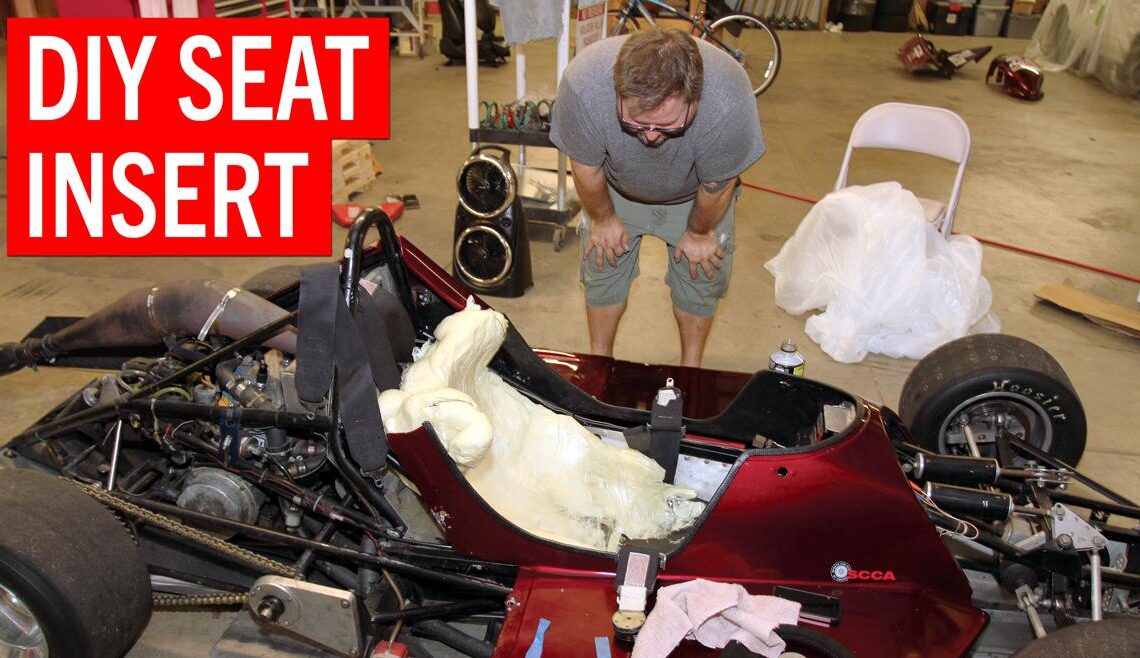[Editor’s Note: This article originally appeared in the October 2015 issue of Grassroots Motorsports.]
Driving a race car is difficult enough, what with the noise and the g-loads and the throngs of onlookers cheering your every move. But if you’re being thrown around the cockpit like a rag doll, lap times will suffer, throngs will not cheer, and your trophy shelf will be a barren reminder of all that could have been.
We’re here to help.
We all know that a proper driving position is key to best performance behind the wheel, but maintaining it in the face of physics can be daunting. This is especially true in formula cars and sports racers, where there usually isn’t a “seat” as we know it–just a hole that is roughly human-shaped.
The easy solution to the problem is expanding polyurethane foam. Common in the marine industry, this foam is the product of a two-part chemical reaction. When those chemicals are combined, the liquid transforms into an expanding cloud of goo, eventually hardening to the consistency of Styrofoam. It’s an easy and cost-effective way to create a seat mold that properly locks the driver in place for high-g fun.
No silver cloud comes without raindrops, though, so here’s our default warning: Polyurethane foam and fire are not the best combination. It’s not highly flammable, but it will melt, and the resulting sludge is a hot, sticky mess that can further complicate the already unpleasant environment of a burning race car.
So if you’re concerned about fire, we recommend covering your foam seat mold with Nomex cloth to increase its fire resistance. We used common headliner material in our autocross-only Formula 500, but then we typically autocross in shorts and a T-shirt, so our seat fabric is certainly not the weakest link in our fire safety chain.
A self-extinguishing foam option is available from BCSI, the popular roll bar padding manufacturer. This SFI-approved kit uses EIS W50, an energy-absorbing foam that, like our low-buck urethane, starts off as a liquid.
For our project, we used a foam with a 2-pound density from Fiberglass Coatings, Inc., of Fort Lauderdale, Florida. They sell all sorts of molding chemicals for hobby and industry applications, and they deal with customers both directly and via Amazon.
The “2-pound” in our foam’s description refers to the weight of one cubic foot of set foam. This is the lightest of the expanding foams, the one commonly used for…
Click Here to Read the Full Original Article at Grassroots Motorsports Online Articles…

